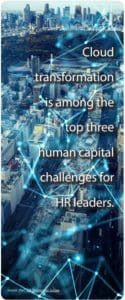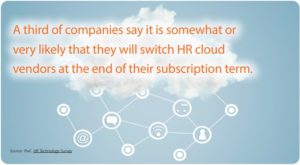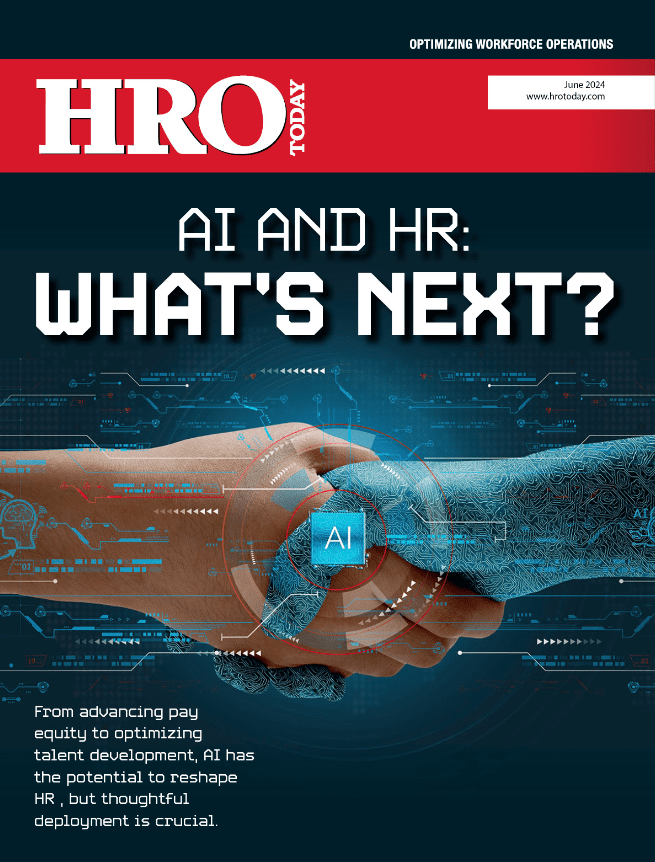Organizations need to take a holistic approach that aligns with company values and long-term goals when investing in new HR technologies.
By Dan Staley
The rise of hybrid and remote work models have led to on-demand technology needs, and many companies are struggling to meet their workers’ shifting expectations. In today’s new working model, a clear and concise strategy is critical for the effective implementation of workplace technology.
Some HR departments will jump the gun, scrambling to find technology that will fit their budget and meet the most basic needs. In reality, organizations need to take a holistic approach that directly aligns with company values and long-term goals. This process might be daunting, but a gradual approach is key. To discover how technology can help solve today’s complex HR business challenges, build trust, and identify new opportunities, leaders should consider four key measures.
1. Take a gradual approach to disruptive tech. Innovative technologies such as robotic process automation (RPA), internet of things (IoT), and artificial intelligence (AI) can increase efficiency by reducing time spent on repetitive and non-strategic tasks. Despite these benefits, HR departments still struggle to implement such solutions. Research has found that the top reasons for not leveraging these newer technologies are high costs and lack of compelling reason for use. Through gradual and strategic planning, departments can explore the benefits of these technologies and build a case for top leadership on the advantages of implementation. The right technological assets will result in benefits that far exceed the implementation costs.
2. Avoid vendor regret. A recent PwC HR Technology Survey found that more than a third of companies say it is somewhat or very likely that they will switch HR cloud vendors at the end of their subscription term, while only 20% say it is very unlikely. In some cases, a switch is unavoidable and makes good business sense. However, in many cases, a vendor switch is the result of an initial poor software fit or implementation. HR leaders must find technology that not only aligns with their most critical needs for now and tomorrow, but also with the company’s overarching values.
When undergoing vendor selection, it is essential to assess future software partners across multiple dimensions and take a long-term perspective. Even if the subscription only lasts a few years, it is important to access the best partner for the organization’s technology journey to avoid redundant implementation investments. In this process, it is essential to consider these factors when evaluating a new vendor: 
- vendor cost;
- user experience;
- history of client satisfaction;
- technology architecture and tools;
- industry market share;
- alignment with company culture;
- functional capabilities; and
- implementation partner ecosystem.
Avoiding a proper examination of a potential partner could make or break the tech journey.
3. Address cloud security and skills challenges early. Cloud transformation is among the top three human capital challenges for HR leaders. In PwC’s HR Technology Survey, respondents who have already transitioned to the cloud report that it met or exceeded expectations. It is important to note that even if every HR leader who moved core processes to the cloud is pleased with the move, problems will likely persist, and new risks may present themselves. Nearly 25% of HR leaders cited concerns over the security of critical data stored on the cloud as a top technology challenge. Acting swiftly to upskill resources on digital/cloud acumen and cloud-specific cybersecurity can make the move more successful. Work closely with the IT team and chief information security officer during the implementation process to ensure minimal risk for the company.
4. Support remote work and employee productivity. Leaders agree that remote and hybrid work is here to stay. However, leaders also struggle to manage their employees’ productivity while they are not physically present. In the same survey, 95% have either implemented new methods to track and report on productivity and performance metrics for remote workers, have a plan to do so, or are developing a plan now. With this technology, it is essential to have proper implementation. If not introduced correctly, it can encourage “busy” work as employees try to play the system. This in turn may erode trust in an already tight labor market.
Leaders must instead use these systems to analyze data at an aggregate level, gauging productivity, workforce engagement, collaboration, and work-life balance. The ability to track overall productivity and engagement for remote workers compared to on-site employees also allows companies to make informed decisions on return-to-office plans. Technology can put employees at the center of an organization’s value creation model, giving them the means to lead and drive the transformation.
Through strategic implementation and emphasis on the long haul, HR can make decisions that will optimize the company’s success. Disruption occurs in waves – moments of disturbance are balanced by periods of stabilization and adoption. Realistically, these changes happen through innovative and effective business decisions over a long period of time. In a time filled with disruption, don’t be afraid to take the plunge into tech.
Dan Staley is partner of HR technology and transformation at PwC US.















